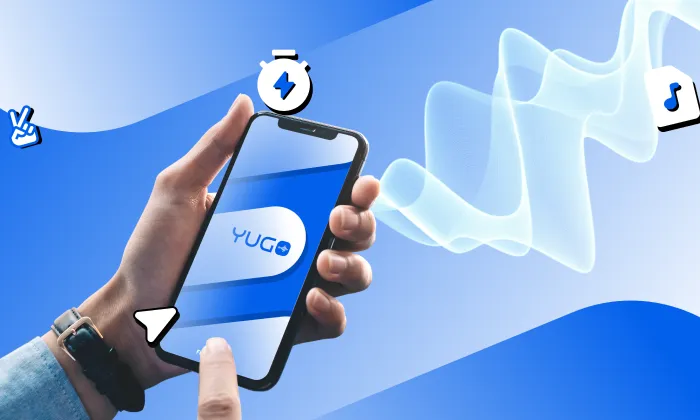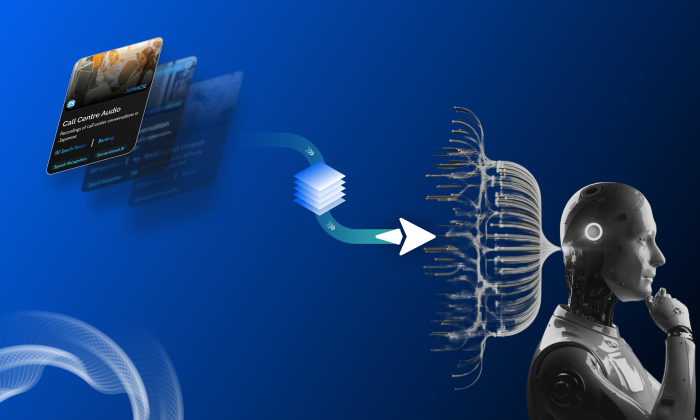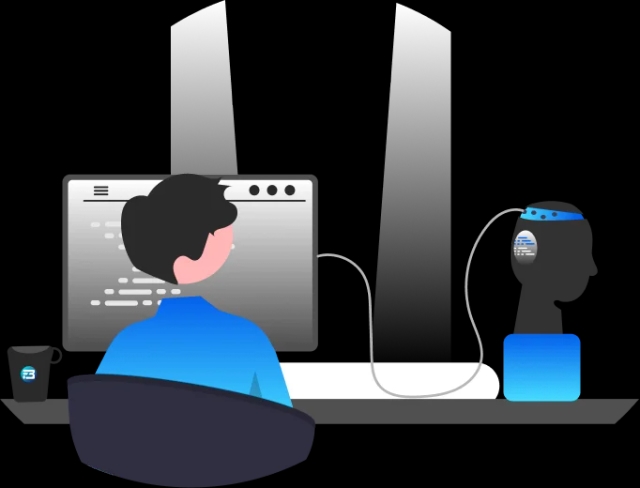Building an Automatic Speech Recognition (ASR) model requires a massive amount of training and testing data. And without proper speech recognition data, the quality of the voice assistant or conversational AI system can suffer.
Imagine a customer attempting to resolve an issue through an unhelpful voice assistant. The frustration can be immense, and the user experience can be deeply unsatisfying.
Speech recognition data collection methods vary based on the algorithm used in the ASR model, as well as the use case for the system. The good news is that there are several ways to collect the right type (the data that aligns with your objective) of speech data.
If you're looking for a generic dataset, there are plenty of public speech datasets available online. However, if you need speech data that is tailored to your solution's exact use cases, you'll need to collect your own data.
In this blog post, we'll explore each of these options and provide you with the pros and cons of each method to help you find the best speech data for your machine-learning algorithm.
Collecting your own data involves several options, including using public or commercial datasets, telephony speech datasets, in-person or field-collected speech datasets, and custom data collection. Each method has its advantages and disadvantages, and the decision to choose one over the other will depend on your specific use case and requirements.
For instance, public datasets are easily accessible and have large sample sizes, but they may not be representative of your target population or context. Commercial datasets may provide a more tailored solution, but they can be expensive. Telephony speech datasets are another option, but they have limitations in terms of speech variability.
In-person or field-collected speech datasets can provide more natural and representative data and can be tailored to a specific population or environment, but they can be time-consuming and costly to collect. Custom data collection is the most tailored option that you can have but it can be the most time-consuming and expensive if you fail to choose the right partner!
By exploring each option in-depth, you'll be able to make a data-driven decision on which method is best suited for your ASR model. With the right speech recognition data, you can build a high-performing ASR model that meets your needs and delivers exceptional user experiences.
Data Sourcing based on Algorithms in ASR Model Training
Objective-based data sourcing involves data collection based on algorithm architecture. These algorithms range from simple to complex, depending on the level of accuracy required and the complexity of the language.
There is a traditional algorithm such as Markov Models (HMMs), which are widely used for speech recognition tasks. They rely on probabilistic models to match audio inputs to pre-defined words or phrases.
-data-collection/content/hybrid-hmm-mlp-speech-recognition-system.webp)
Traditional Automatic Speech Recognition (ASR) algorithms are designed to transcribe speech into text. These algorithms have been around for several decades and are still widely used today. The two most commonly used traditional ASR algorithms are the Hidden Markov Model (HMM) and Gaussian Mixture Model (GMM).
HMM-based ASR algorithms are statistical models that are trained on a large corpus of speech data. These models are used to determine the probability of a given sequence of phonemes (the smallest unit of sound in a language) occurring in a given context. HMM-based models have been very successful in speech recognition, particularly for isolated word recognition and dictation applications.
Another widely used traditional algorithm is Dynamic Time Warping (DTW). Unlike other traditional ASR algorithms, which rely on statistical models, DTW is a pattern-matching algorithm that compares a speech signal to a reference template.
-data-collection/content/speech-recognition-using-dynamic-time-warping.webp)
DTW works by calculating the distance between two-time series signals. In the case of speech recognition, the time series signals are the speech signal and the reference template. DTW aligns the two signals by stretching or compressing them in time, in order to find the best match between the two.
Nowadays, there are state-of-the-art Deep Neural Networks (DNNs), which are more complex and require larger amounts of data for training. DNNs use layers of artificial neurons to analyze audio inputs and recognize patterns.
-data-collection/content/automatic-speech-recognition-system-diagram.webp)
Deep learning-based acoustic models are at the forefront of modern speech recognition systems. These models use artificial neural networks to learn from large amounts of speech data and can achieve state-of-the-art accuracy rates. Some of the deep learning-based acoustic models, such as QuartzNet, Citrinet, and Conformer, have shown impressive results in speech recognition tasks.
Regardless of the algorithm used, the quality of the speech recognition data is essential for the success of the ASR model. The best sources of speech recognition data depend on the specific algorithm used and the target population or context.
For example, if you are training an ASR model for voice assistants, telephony speech datasets can be a good source of data. These datasets contain audio recordings of phone conversations and are often used for training ASR models for call centers or voice response systems.
-data-collection/content/conversion-with-conversational-ai.webp)
On the other hand, if you are training an ASR model for conversational AI systems, in-person or field-collected speech datasets can be a better source of data. These datasets contain audio recordings of natural conversations between humans and can provide a more realistic representation of the language and context used in these conversations.
The quality and representativeness of the speech recognition data are critical for the performance of an ASR model, regardless of the algorithm used. By carefully selecting the appropriate data sources and methods for collecting speech data, you can ensure that your ASR model meets your needs and delivers optimal results.
Sources of Speech Data Collection for ASR Training
Option 1: Public/Open Source Speech Datasets
Public speech datasets are an excellent place to start when searching for speech recognition data. These datasets are typically open-source and can be found online. Some popular public speech datasets include:
Google’s Audioset: There are 2,084,320 YouTube videos containing 527 labels. Google's AudioSet is a large-scale dataset of annotated audio events that was created by Google researchers in 2017. The dataset contains more than 2 million 10-second audio clips from YouTube videos, with each clip labeled with one or more of 632 different sound categories, such as "dog barking," "car engine," and "applause."
CommonVoice: This dataset contains over 9,000 hours of speech in 60 languages and was created by Mozilla. One of the biggest advantages of this dataset is that it is constantly growing, thanks to the contributions of thousands of volunteers from around the world.
LibriSpeech: This dataset contains over 1,000 hours of speech from audiobooks and is commonly used for speech recognition research. However, it is important to note that the speakers in this dataset are all North Americans, so it may not be suitable for models that need to recognize accents or dialects from other parts of the world.
VoxForge: This dataset was created by volunteers and contains over 100 hours of speech. While it is not as large as some of the other public datasets, it is a great option for those looking to get started with speech recognition models.
Pros:
- Public speech datasets are often free or low-cost, making them accessible to researchers and hobbyists alike.
- These datasets can be used to develop speech recognition models for a variety of languages and accents.
- Public datasets are often well-documented, making it easier to understand how the data was collected and labeled.
Cons:
- Public datasets may not always be high-quality, as volunteers often collect them. The size of public datasets can vary widely, so it may be difficult to find the right amount of data for your specific needs.
- It can be biased and not as diverse as needed.
Option 2: Ready-to-Deploy or Prepacked Speech Datasets
Ready-to-deploy or pre-packaged speech data collections refer to pre-existing datasets of audio recordings and their corresponding transcriptions or labels, which can be used to train and test speech recognition systems. The medium is the vendors or agencies who have acquired the datasets with crowdsourcing for common industry-specific use cases.
The collection and processing of ready-to-deploy speech data can vary depending on the dataset and the organization that created it.
-data-collection/content/ai-taking-off-the-self-data.webp)
Some companies specialize in collecting and selling speech data to other companies and researchers. These vendors may use a variety of methods to collect data, such as recording people in controlled environments or using speech-to-text software to transcribe existing recordings.
As all these speech datasets are pre-collected, most of the time they are called off-the-shelf (OTS) speech datasets.
Now you may be an individual who is just starting out in this domain and want to learn more with practice then you should go for open source or publicly available data.
Another option might cost you but you can get features such as quality, and pre-labeled data. It is suited for manufacturers that are developing the same featured product of speech recognition such as voice assistants for largely spoken languages.
FutureBeeAI has an Off-the-Shelf speech recognition dataset that includes the following categories.
General
Conversation Speech Datasets
Delivery & Logistics Call Center Speech Datasets
Retail &
E-Commerce Call Center Speech Datasets
BFSI Call Center Speech
Datasets
Healthcare Call Center Speech Datasets
Real Estate Call Center Speech
Datasets
Telecom Call Center Speech Datasets
Travel Call Center Speech Datasets
General Domain
Prompt Speech Dataset
BFSI Prompt Speech Datasets
and many more.
These are available with samples of recordings and all the details of any particular dataset!
🔎 Explore all the categories here. (Play with filters to get more insights)
P.S. You can also customize it to your needs
Pros:
- It is readily available. If your objectives meet the pre-packed data that vendors or agencies have you can save almost 40 to 50% of your data collection and preparation time.
- Avail of different offers they have on some categories of data. So it can cost you less compared to generating on your own.
Cons:
- You should not go for this option if you’re seeking or have specific development objectives.
- As this data is resalable, you can not avail benefits of ownership.
- Less customizable features such as cultural diversity, speaking dialects, languages, technical specifications, etc.
Option 3: Custom(Crowdsourced/Remote) Data Collection
If you have specific speech recognition needs, you may consider creating your own dataset. This involves collecting speech data and labeling it for use in your speech recognition model. While this option can be time-consuming and costly, it allows you to tailor the data to your specific needs.
Here are the key aspects of custom speech data collection for:
 Defining
the purpose and
identifying the target audience
Defining
the purpose and
identifying the target audience
 Creating
a script that includes a
range of accents and speaking styles
Creating
a script that includes a
range of accents and speaking styles
 Recruiting
a diverse range of participants
Recruiting
a diverse range of participants
 Conducting
recording sessions in a
specific environment with clear instructions
Conducting
recording sessions in a
specific environment with clear instructions
 Transcribing
and annotating the
data for use in training and testing the ASR model
Transcribing
and annotating the
data for use in training and testing the ASR model
 Implementing
quality control
measures to ensure accuracy
Implementing
quality control
measures to ensure accuracy
-data-collection/content/key-aspects-of-custom-speech-data-collection.webp)
With all of these aspects included, FutureBeeAI has a team of the experienced community from diverse backgrounds who can help you collect high-quality custom speech data that is representative of your target audience. With the expertise of nearly 4 years and equipped with state-of-the-art data collection tools, you will be amazed by the precision dataset received in a timely manner.
Pros:
- As you have control over every aspect of the collection, you can ensure the accuracy of the speech recognition models that collect data specific to the domain or industry in which the model will be used.
- It is quite less costly than the in-house collection as you can expect to receive not just raw data but structured data of specific transcription. (This may vary depending on the model criteria).
🔥 Awesome read - Important Factors to Consider When Choosing a Data Annotation Outsourcing
Service
- Collecting speech data from a specific region or dialect can improve the language coverage of speech recognition models, allowing them to recognize a wider range of accents and dialects.
- Custom speech data collection can be tailored to specific use cases or scenarios so that the speech recognition model can accurately recognize speech in different situations(ie; noisy environments, different dialects, etc).
- With custom speech data collection, model creators have greater control over the quality of the data collected, ensuring that the data is accurate, relevant, and of the required quality.
- This can be scaled up or down depending on the needs of the organization, allowing for flexibility and adaptability in data collection.
- Custom collection also ensures that data privacy regulations like GDPR are followed, protecting the privacy of individuals whose voices are being recorded.
- One can define leverage as the power of speech data labeling or speech-to-text or transcription of raw datasets with experienced agencies having an industry-focused crowd.
Cons:
- Yes, you can leverage the diverse crowd, have data labeled, and can get deliverables but can access fewer options when it comes to minor intrinsic details like recording equipment choices.
- Depending on your requirements, it may be costlier to collect loads of datasets to train your model effectively.
- Finding the right data collection partner can be daunting that can fulfill all the requirements of your objectives.
-data-collection/content/card-98.webp)
Option 4: In-Person or Field-Collected Speech Datasets
In-person or field-collected speech datasets involve collecting speech data directly from people in a specific environment or context. This option can be especially useful if you're interested in developing speech recognition models for a specific population or environment.
The goal of speech data collection can be to study various aspects of human speech, such as the sound properties of speech, the way people produce and perceive speech sounds, the way speech varies across different languages or dialects, or to develop speech recognition or synthesis systems.
-data-collection/content/in-person-or-field-collected-speech-datasets.webp)
The process of in-person speech data collection involves several steps, including defining the research question, developing a protocol, selecting participants, obtaining informed consent, and recording speech data with specific equipment.
Pros:
- It can be tailored to a specific population or environment, ensuring that your speech recognition model is well-suited to your use case.
- This type of data can be more natural and representative of real-life situations, making it more accurate and reliable for your specific application.
- Highly customizable, with audio and equipment specification and selection, and any other required feature.
Cons:
- Collecting in-person or field-collected speech datasets can be time-consuming and costly, as you'll need to find and recruit individual participants to collect the data.
- You may need to navigate ethical and legal considerations when collecting data from individuals.
- In-person or field-collected speech datasets may have a smaller sample size compared to custom data, which could limit the generalizability of your model.
Option 5: Organizational or Owned Data
The fifth option for finding speech recognition data is to use proprietary or owned data. This option involves collecting audio recordings of your own users or customers and using them to train your ASR model. This approach can be beneficial if you have a unique target population or context that is not well represented in existing public or third-party datasets.
Pros:
- One of the biggest advantages of using proprietary data is that it can be customized to your specific use case. This can provide a better representation of the language and context used by your users, leading to more accurate and effective ASR models.
- Since the data is owned by your organization, there are no restrictions on how it can be used or shared. This provides more flexibility and control over the data and its use.
- Proprietary data is owned by your organization, which means that you have exclusive rights to use and benefit from it. This can be a valuable asset for your organization in the long term.
Cons:
- Collecting and annotating speech data can be a time-consuming and expensive process. This is especially true if your target population is diverse or hard to reach.
- Depending on the nature of your data collection practices, you may need to ensure that you are in compliance with privacy laws and regulations. This can be a significant challenge, especially if you are collecting data from users across different jurisdictions.
- There is always the potential for bias in any dataset, and this is particularly true for proprietary data. If the data is collected from a limited or homogenous group of users, it may not be representative of the broader population and could result in biased or inaccurate ASR models.
Explore🚀 FutureBeeAI’s Speech Data Collection
Speech recognition data collection methods vary based on the algorithm used in the ASR model, as well as the use case for the system. The good news is, now you’re aware of the speech data collection sources.
With the varied sources available in the market, you know what to select based on your ML objective criteria.
If you’re in search of speech data collection with varied and specific needs (ie; regional languages of any country, accents, dialects, age group, etc.) FutureBeeAI has the solution.
Our experience working with some of the leading AI organizations gives us the understanding that each one of these challenges can have extreme implications on quality, timeliness, and budget.
We understand that quality in terms of data and scale in terms of the process is an ideal match for any AI organization working on annotation projects. The approach to mitigate these challenges can be found in the PPT formula; people, process, and tools.
To efficiently deliver the expected result, we need SOPs for each step of the annotation process. With our experience of serving leading clients in the ecosystem, we have developed SOPs that work almost all the time.
Before beginning any project, each stage, from understanding the use case and requirements to creating guidelines, finding and onboarding a crowd, project management, quality evaluation, and delivery, requires a detailed plan.
Each of these major stages contains many important sub-stages and can cause continuous back and forth with the client, which can increase the overall timeline and budget. With our time-proven, experience-driven process, this can be easier than ever before.
Although there are already plenty of tools available in the market, some of them are paid and some are open source, a comprehensive tool that is easy to use for annotators is lacking.
FutureBee has its own proprietary platform for different data collection types. You can request a custom dataset according to the model requirement and your objectives at our Yugo SaaS speech data sourcing platform.
Check these 👇 resources to learn more about our area of solutions.
🔗 The
Easiest and Quickest way to Collect Custom Speech Dataset
🔗 Transcription:
The Key to Improving Automatic Speech Recognition
-data-collection/thumbnails/main-page/key-sources-for-acquiring-speech-data-for-developing-speech-recognition-models.webp)





